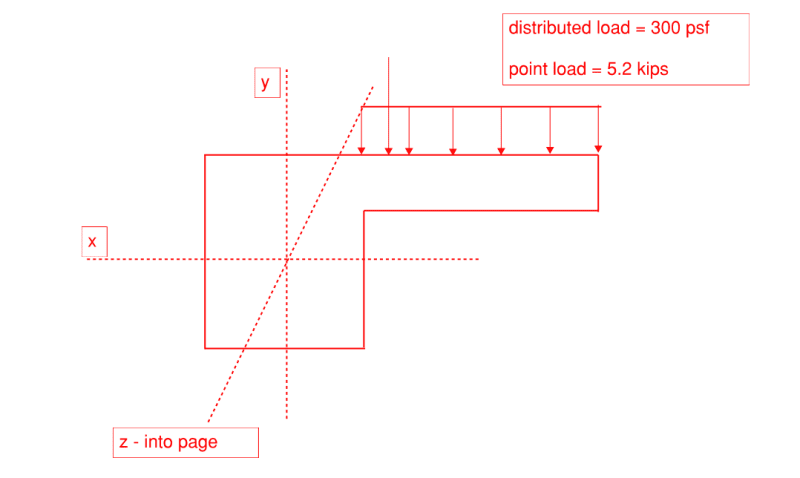Hello. I am trying to analyze an existing beam for the following load conditions. The beam section is an "L shape".

So for the cantilever, I can simply use the basic moment and shear formulas, and reinforce the tension side accordingly.
- Another option I am considering is to consider the cantilever as a corbel per ACI 318-19 and analyze it for shear friction? Should I consider the cantilever as a true cantilever or as a corbel? Or, should I just select the more conservative approach?
Regarding the rectangular section part of the beam, all the loads are on the cantilever. As a result, should I design it as a rectangular beam, with all moments from the cantilever occurring about the Z axis? So I would have to use the section corresponding to the Z axis, correct?
Thanks for your time.

So for the cantilever, I can simply use the basic moment and shear formulas, and reinforce the tension side accordingly.
- Another option I am considering is to consider the cantilever as a corbel per ACI 318-19 and analyze it for shear friction? Should I consider the cantilever as a true cantilever or as a corbel? Or, should I just select the more conservative approach?
Regarding the rectangular section part of the beam, all the loads are on the cantilever. As a result, should I design it as a rectangular beam, with all moments from the cantilever occurring about the Z axis? So I would have to use the section corresponding to the Z axis, correct?
Thanks for your time.
